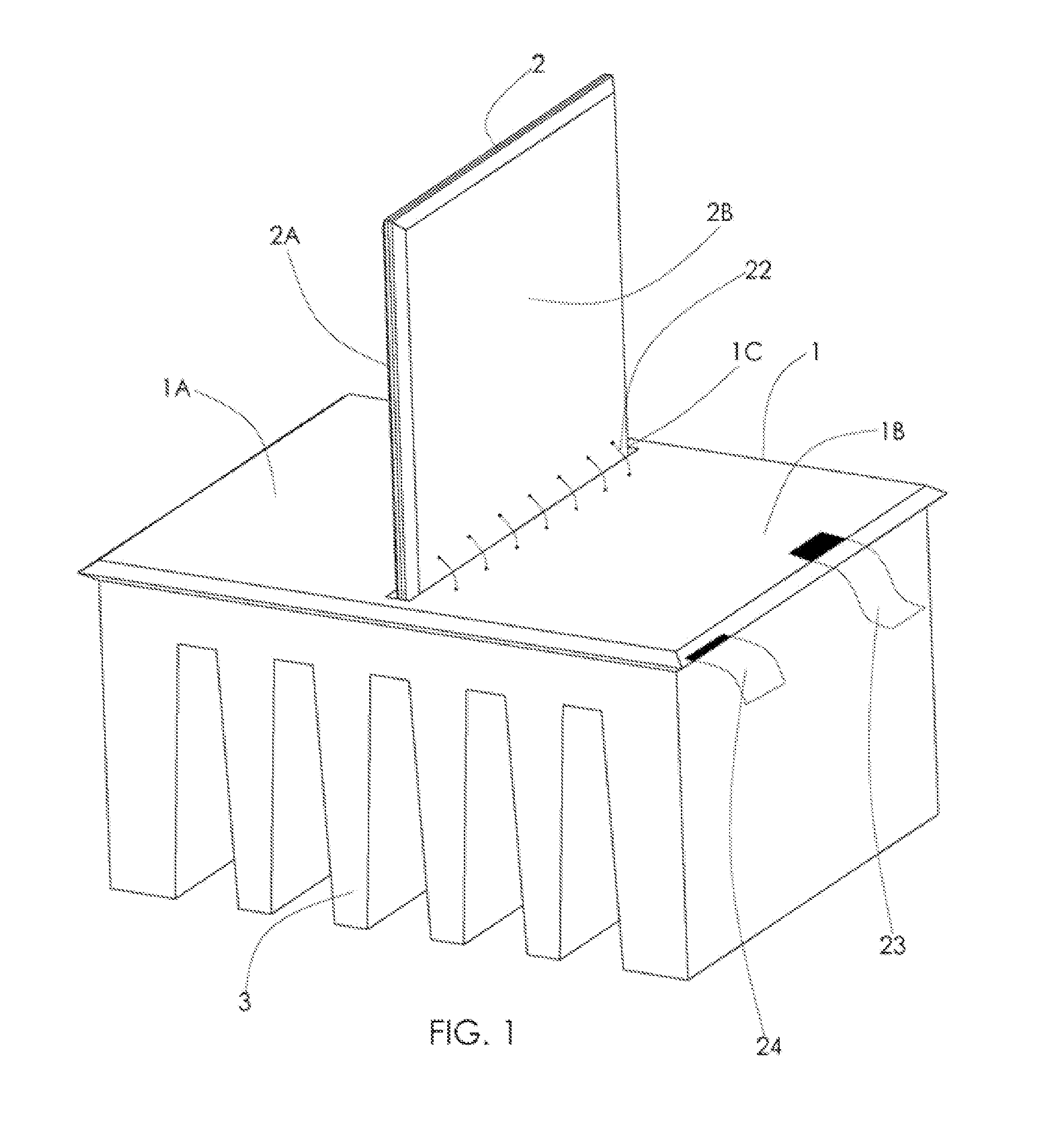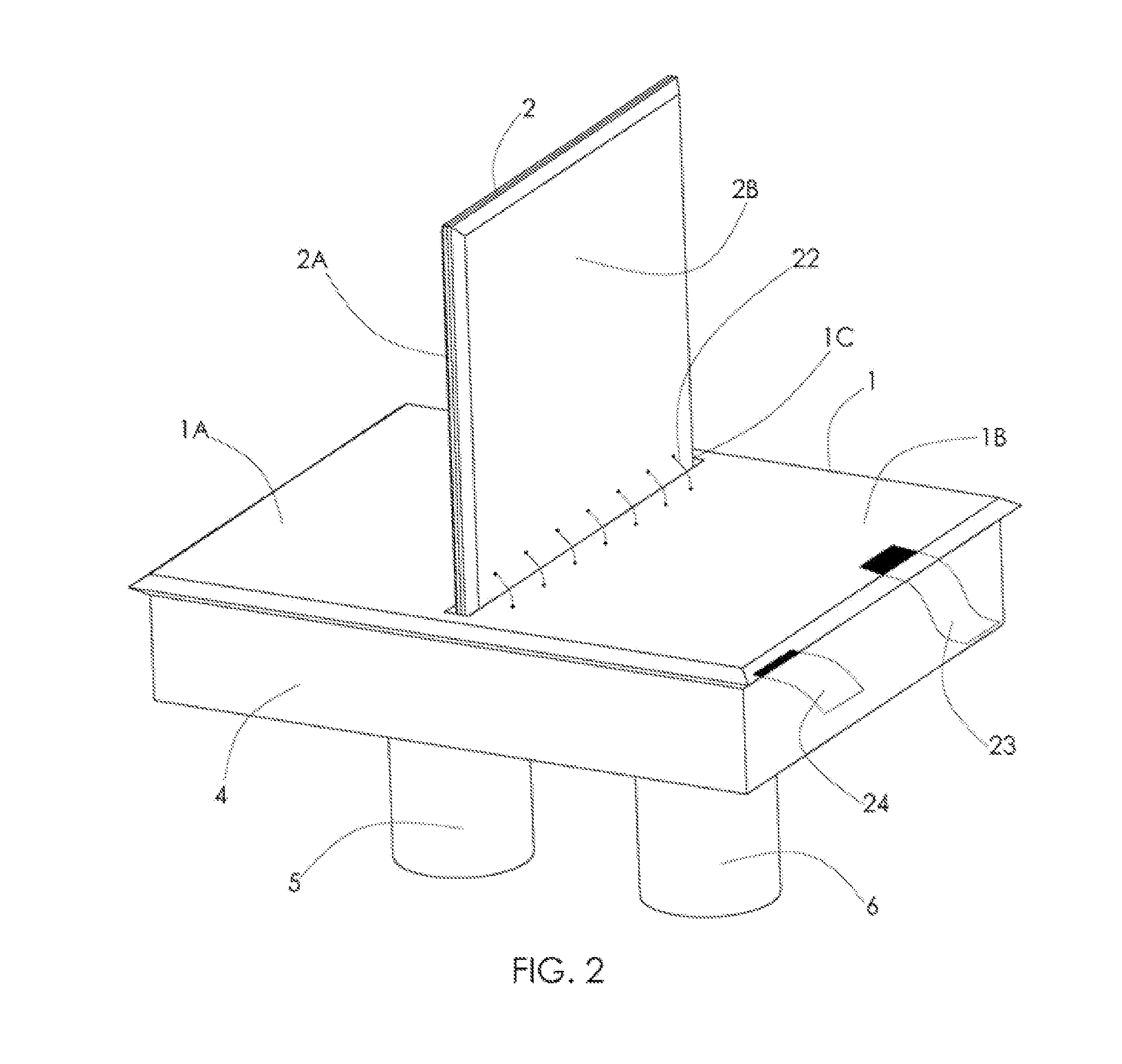3-D Solar Cell Device For Concentrated Photovoltaic Systems
- Summary
- Abstract
- Description
- Claims
- Application Information
AI Technical Summary
Benefits of technology
Problems solved by technology
Method used
Image
Examples
Embodiment Construction
[0026]In the following subsections, we provide details on the elements involved in the construction of the 3-D solar structure for a CPV solar device. Detailed assembly views are included in this section to assist in the understanding of the structural design and functionality of the 3-D solar cell and CPV solar device.
[0027]FIG. 1 shows an assembly view of a 3-D solar cell device. The 3-D solar cell structure comprises a base solar cell chip 1, a vertical solar cell chip 2 and a mounting block 3. The base solar cell chip 1 comprises a face of an n-type solar cell 1A and 1B, and a groove 1C. The vertical solar cell chip 2 comprises a face of n-type solar cell 2A and a face of an n-type solar cell 2B. The vertical solar cell chip 2 can be formed by bonding two pieces of a solar cell back-to-back so that the n-type face of the vertical solar cell 2 shows on the n-type face of 2A and 2B. Then, the vertical solar cell chip 2 is interconnected to the groove 1C to form a perpendicular ver...
PUM
 Login to View More
Login to View More Abstract
Description
Claims
Application Information
 Login to View More
Login to View More - R&D
- Intellectual Property
- Life Sciences
- Materials
- Tech Scout
- Unparalleled Data Quality
- Higher Quality Content
- 60% Fewer Hallucinations
Browse by: Latest US Patents, China's latest patents, Technical Efficacy Thesaurus, Application Domain, Technology Topic, Popular Technical Reports.
© 2025 PatSnap. All rights reserved.Legal|Privacy policy|Modern Slavery Act Transparency Statement|Sitemap|About US| Contact US: help@patsnap.com



